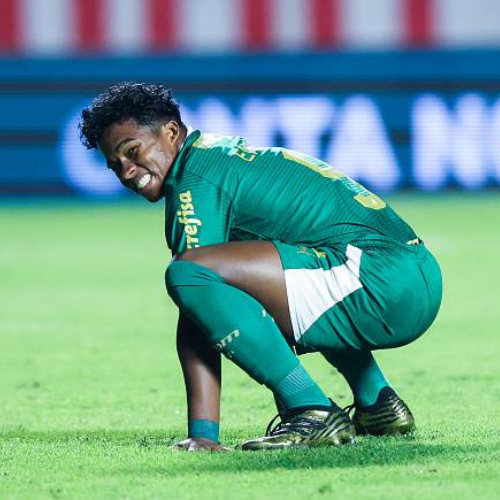
With its renowned “jogo bonito” (beautiful game), iconic stars, and record five World Cup titles, Brazil has long been known as the “land of football.” But is it still?
“The country of Pele, Garrincha, and Ronaldinho, which once impressed the world with its ‘samba’ style, has not won the World Cup since 2002, nor has it produced a Ballon d’Or winner since Kaka in 2007. The ‘Selecao’ is currently struggling to secure its place at the 2026 World Cup, leading many in Brazil and beyond to wonder why. “We’re at a low point. We used to have more top-quality athletes,” said the late Pele’s eldest son, Edinho, in a recent interview with AFP. Even President Luiz Inacio Lula da Silva has joined the national soul-searching, admitting that Brazil “doesn’t play the greatest football in the world anymore”. So what happened?”
Disappearing pitches
One possible reason could be the decrease in street football participation, which is where some of Brazil’s greatest players, like Rivellino, Zico, and Romario, began their careers.
“Nobody plays in the street anymore. You don’t hear stories about that kick that broke somebody’s window,” said amateur footballer Lauro Nascimento, his jersey stained with orange mud after playing on one of the few dirt pitches left on Sao Paulo’s north side.
Nascimento, a 52-year-old finance professional, used to play football barefoot as a boy and broke several toes in the process. He currently plays for a local team called Aurora. The district of Vila Aurora, where he grew up, is now covered in concrete buildings. There used to be a field where kids played football, but now it has been replaced by real estate development. According to sports historian Aira Bonfim, any open space that was once used for football is now considered valuable for development.
Nascimento and his friends pay $160 a month to rent the rundown piece of land where they play matches. However, this cost is a significant barrier for working-class families. In Brazil, access to a playing field for poor children often relies on school, social programs, or a football academy. Unfortunately, only one in five of these academies is free, as indicated by a 2021 study. Additionally, many of these fields have synthetic surfaces, which some argue do not develop players’ skills as well as the rough, rocky fields of the past.
‘Mechanical’ style
The decline in time spent playing the sport has had a significant impact on our football, according to researcher Euler Victor. “We have a large number of Brazilians playing in Europe but very few stars.”
Brazil’s latest great hope, Neymar, shone at Barcelona, but struggled to lead the national team to championships in a career bogged down by controversy and injury.
Brazilian fans are looking to 23-year-old Vinicius Junior and the young talent Endrick for hope. Endrick is expected to join Vinicius at Real Madrid when he turns 18 in July. Although Brazil still produces the most footballers in the world, the revenue they bring in has decreased.
According to FIFA figures, clubs paid $935.3 million in transfer fees for 2,375 Brazilian players last year, down nearly 20 percent from 2018, when the number of players was smaller — 1,753.
Part of the drop is because teams are paying less to hire free agents and younger players.
“Our technique has suffered,” said Victor Hugo da Silva, a coach at Flamengo’s youth academy in São Gonçalo, outside Rio de Janeiro. “The playing style changed, which ended up taking away some of our creativity. Our football used to be so joyful, but now it’s become more mechanical. There is also a shortage of standout stars.”
On a synthetic pitch, he trains seven to 10-year-olds dreaming of following in the footsteps of Vinicius, the academy’s most famous graduate.
The next generation still has football in its veins, but has “difficulties” with training, a problem Da Silva attributes to their sedentary lifestyles and “addiction” to screens.
Brazil, with a population of 203 million, has more cell phones than people. According to the World Obesity Atlas, over one-third of children aged five to 19 in Brazil are overweight or obese. Robson Zimerman, a talent scout for the Sao Paulo club Corinthians, mentioned that young footballers today encounter more challenging conditions, such as the need to play multiple positions and facing high expectations from family and the media.
“Before, they just had to worry about playing football,” he said.
But Leila Pereira, president of cross-town rivals Palmeiras, the reigning league champions, insists Brazil will never stop being the country of football.
Brazilian teams have won the last five Copa Libertadores South American titles, with Palmeiras winning two of them. The club has produced talented players like Endrick, whose transfer to Real Madrid reportedly earned the club $65 million, including bonuses. They also have promising young players like Estevao and Luis Guilherme.
Pereira disagrees with those who believe that Brazilian players have declined in quality. He points out the high transfer fees they command as evidence of their continued excellence.
Favela party
“For many people, Pereira is seen as the epitome of a new breed of Brazilian football. The sport now resembles its European counterpart, with players receiving high salaries by South American standards and ticket prices that are relatively expensive. “With the exorbitant salaries paid to players, clubs are forced to increase ticket prices, making it difficult for fans like myself to attend,” explained David Santos, a supporter of the Flamengo team.
In 2019, he established a fan club for devoted Flamengo fans from the impoverished favelas, just like himself. From the hillside slum overlooking the trendy beach neighborhoods of Copacabana and Ipanema, they recreate the atmosphere of the Maracana on match days. They decorate an old pitch with flags, grill barbecue, and chant loudly as the match plays on a giant screen.
“The ‘country of football’ thing – we’re losing that,” said 38-year-old Vasco fan Pablo Igor.
“Football is what you see here. It’s a game of the people. But street kids like I was don’t have access to it anymore.”







